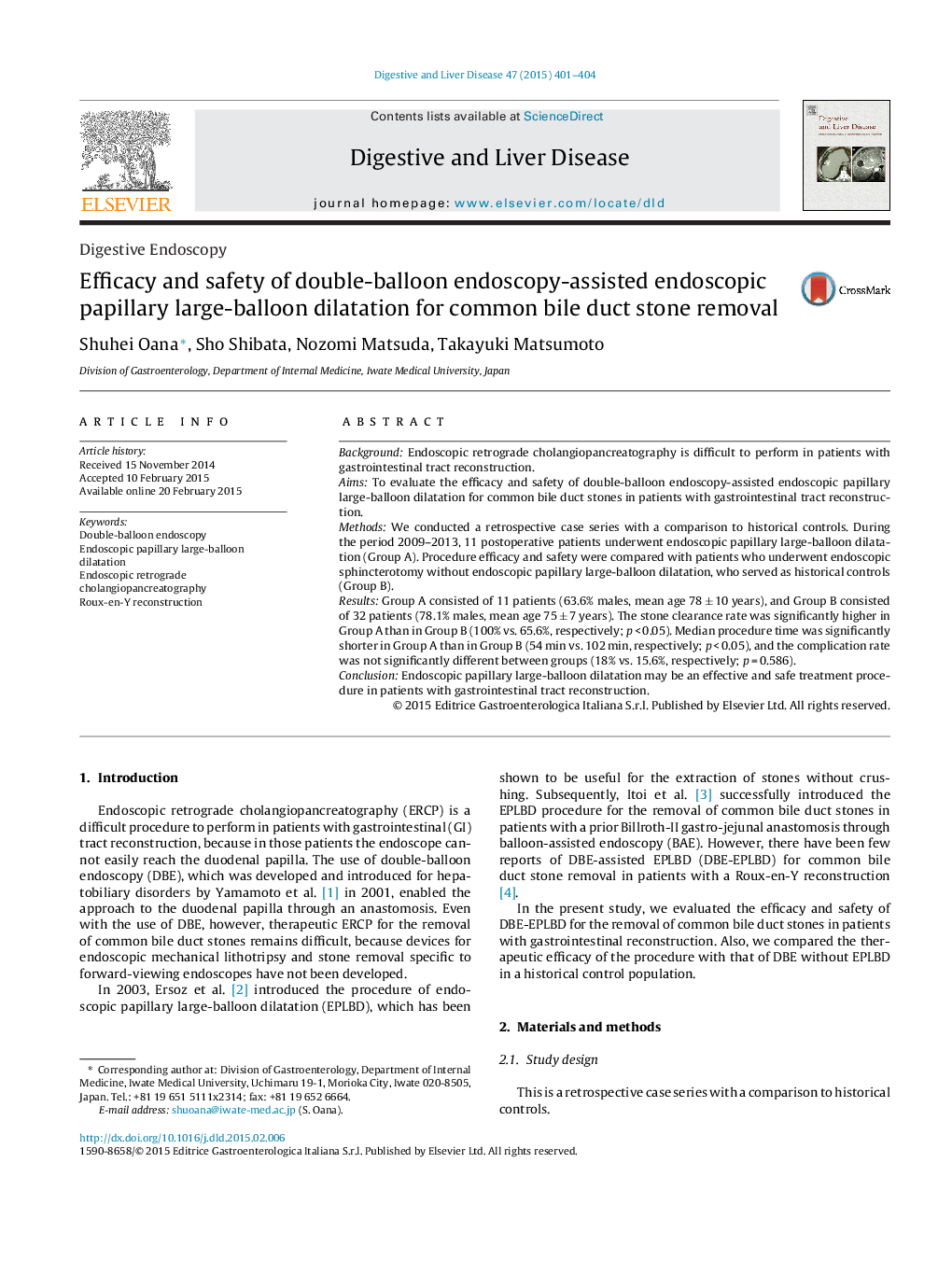| Article ID | Journal | Published Year | Pages | File Type |
|---|---|---|---|---|
| 3261790 | Digestive and Liver Disease | 2015 | 4 Pages |
BackgroundEndoscopic retrograde cholangiopancreatography is difficult to perform in patients with gastrointestinal tract reconstruction.AimsTo evaluate the efficacy and safety of double-balloon endoscopy-assisted endoscopic papillary large-balloon dilatation for common bile duct stones in patients with gastrointestinal tract reconstruction.MethodsWe conducted a retrospective case series with a comparison to historical controls. During the period 2009–2013, 11 postoperative patients underwent endoscopic papillary large-balloon dilatation (Group A). Procedure efficacy and safety were compared with patients who underwent endoscopic sphincterotomy without endoscopic papillary large-balloon dilatation, who served as historical controls (Group B).ResultsGroup A consisted of 11 patients (63.6% males, mean age 78 ± 10 years), and Group B consisted of 32 patients (78.1% males, mean age 75 ± 7 years). The stone clearance rate was significantly higher in Group A than in Group B (100% vs. 65.6%, respectively; p < 0.05). Median procedure time was significantly shorter in Group A than in Group B (54 min vs. 102 min, respectively; p < 0.05), and the complication rate was not significantly different between groups (18% vs. 15.6%, respectively; p = 0.586).ConclusionEndoscopic papillary large-balloon dilatation may be an effective and safe treatment procedure in patients with gastrointestinal tract reconstruction.
